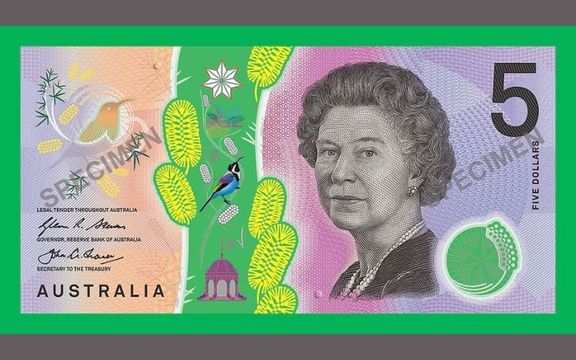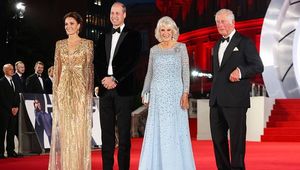
Queen Elizabeth II on the Australian $5 banknoteGetty
Australia, which is part of the British Commonwealth, has announced it will erase the British monarch from its banknotes.
A decision has been made in Australia to not replace the image of the late Queen Elizabeth on its $5 note with her successor and son King Charles.
This will mean no monarch would remain on Australia's paper currency for the first time since 1923. Instead, the Reserve Bank of Australia (RBA) has said a new design honouring Indigenous culture will be used.
"The Bank will consult with First Australians in designing the $5 banknote. The new banknote will take a number of years to be designed and printed. In the meantime, the current $5 banknote will continue to be issued. It will be able to be used even after the new banknote is issued."
Australian Republic Movement chair Craig Foster welcomed the news and said, "This decision by the RBA is a natural consequence of recognising the important place of First Nations Australians in our national story." According to recent estimates, First Nations people lived in Australia for at least 65,000 years before British colonisation.
King Charles became the British monarch after his mother's death in September. In this role, he is also the head of state of Australia, New Zealand and 12 other Commonwealth realms outside the United Kingdom and which is largely ceremonial.
The King will still appear on Australia’s coins, which currently bear the portrait of Queen Elizabeth II.
Why Queen Elizabeth II's face is on Australian banknotes
Queen Elizabeth II has been the constitutional monarch of the United Kingdom and the Commonwealth Realms, including Australia, since 1952. As a result, her image has appeared on the currency of many of these countries, including Australia. The use of Queen Elizabeth's image on Australian banknotes is a symbol of the country's ties to the British monarchy and its history as a former British colony.
It is worth noting that while the Queen's image is featured on the banknotes, Australia is a constitutional monarchy, and the country is governed as an independent nation with its own political and economic systems. The use of the Queen's image on the currency is a symbol of the country's history and its ties to the British monarchy, but it does not reflect any political or economic influence from the UK.
Australia's relationship with the UK
Despite being located on opposite sides of the world, the two countries share a rich cultural and political heritage that has shaped both nations in profound ways.
Historically, the United Kingdom and Australia have been linked through their shared history as part of the British Empire. Australia was a British colony for over 150 years, and this period of colonial rule had a significant impact on the country's development, shaping its cultural, political, and economic systems. Even after Australia gained independence in 1901, it has maintained close ties with the UK.
Today, the UK and Australia continue to cooperate in a number of areas, including trade, diplomacy, and defense. The two countries are both members of the Five Eyes intelligence alliance, and they work together on a range of security and defense issues. They also have a strong economic relationship, with Australia being one of the UK's largest trading partners and a key source of investment and tourism.





Comments